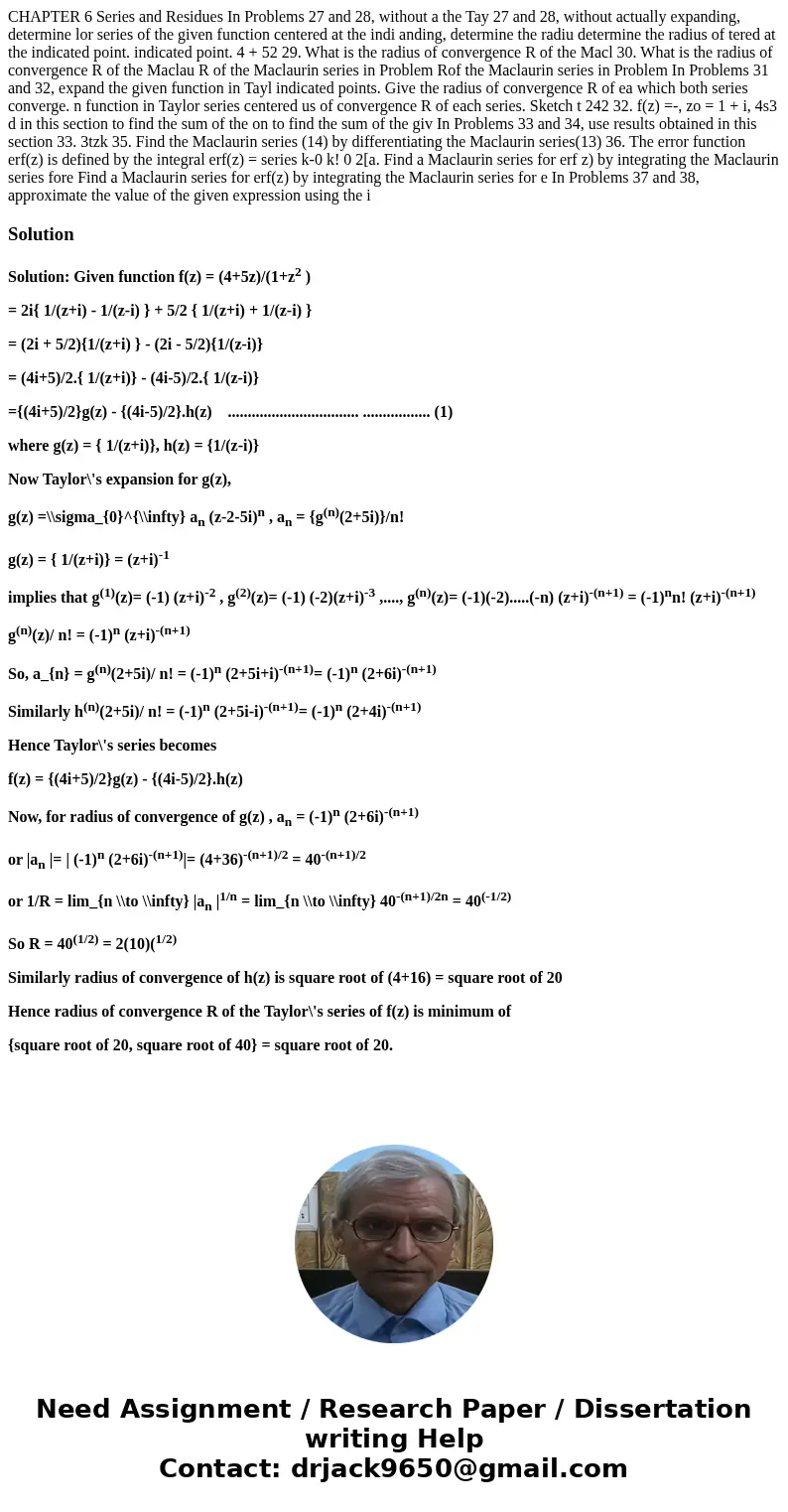CHAPTER 6 Series and Residues In Problems 27 and 28 without
Solution
Solution: Given function f(z) = (4+5z)/(1+z2 )
= 2i{ 1/(z+i) - 1/(z-i) } + 5/2 { 1/(z+i) + 1/(z-i) }
= (2i + 5/2){1/(z+i) } - (2i - 5/2){1/(z-i)}
= (4i+5)/2.{ 1/(z+i)} - (4i-5)/2.{ 1/(z-i)}
={(4i+5)/2}g(z) - {(4i-5)/2}.h(z) ................................. ................. (1)
where g(z) = { 1/(z+i)}, h(z) = {1/(z-i)}
Now Taylor\'s expansion for g(z),
g(z) =\\sigma_{0}^{\\infty} an (z-2-5i)n , an = {g(n)(2+5i)}/n!
g(z) = { 1/(z+i)} = (z+i)-1
implies that g(1)(z)= (-1) (z+i)-2 , g(2)(z)= (-1) (-2)(z+i)-3 ,...., g(n)(z)= (-1)(-2).....(-n) (z+i)-(n+1) = (-1)nn! (z+i)-(n+1)
g(n)(z)/ n! = (-1)n (z+i)-(n+1)
So, a_{n} = g(n)(2+5i)/ n! = (-1)n (2+5i+i)-(n+1)= (-1)n (2+6i)-(n+1)
Similarly h(n)(2+5i)/ n! = (-1)n (2+5i-i)-(n+1)= (-1)n (2+4i)-(n+1)
Hence Taylor\'s series becomes
f(z) = {(4i+5)/2}g(z) - {(4i-5)/2}.h(z)
Now, for radius of convergence of g(z) , an = (-1)n (2+6i)-(n+1)
or |an |= | (-1)n (2+6i)-(n+1)|= (4+36)-(n+1)/2 = 40-(n+1)/2
or 1/R = lim_{n \\to \\infty} |an |1/n = lim_{n \\to \\infty} 40-(n+1)/2n = 40(-1/2)
So R = 40(1/2) = 2(10)(1/2)
Similarly radius of convergence of h(z) is square root of (4+16) = square root of 20
Hence radius of convergence R of the Taylor\'s series of f(z) is minimum of
{square root of 20, square root of 40} = square root of 20.

 Homework Sourse
Homework Sourse